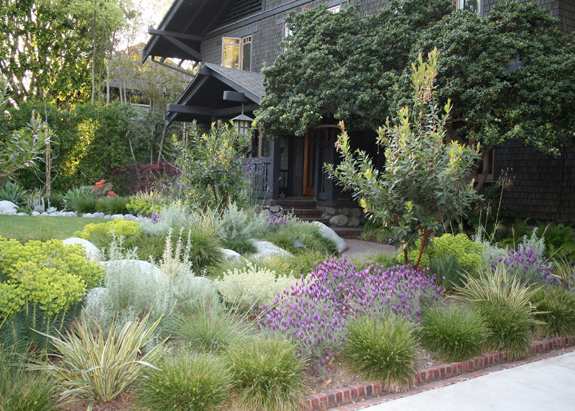What is sustainable residential landscape design?
Sustainable landscape design is the trend in residential landscapes which attempt to be both attractive and in balance with the local climate and environment. Sustainability strives to protect our natural environment, human and ecological health. Through design, the residential landscape is encouraged to be functional, cost-efficient, visually pleasing, environmentally friendly and maintainable, likely achieved by focusing on local resources including native plant-life and attempting to limit non-native species.
According to the “2016 Residential Landscape Architecture Trends Survey” conducted by the American Society of Landscape Architects (ASLA), the top trend currently is rainwater/graywater harvesting, reflecting a growing consumer demand for beautiful residential landscapes that also save water. Landscape architects were asked to rate the expected popularity of a variety of residential outdoor design elements in 2016. The results included demand for outdoor living spaces that are environmentally sustainable, reduce water costs and are low maintenance.
Consumer demands include:
• Rainwater/graywater harvesting
• Native plants
• Native/adapted drought-tolerant plants
• Low-maintenance landscapes
• Permeable paving
• Fire pits/fireplaces
• Food/vegetable gardens (including orchards, vineyards, etc.)
• Rain gardens
• Drip/water-efficient irrigation
• Reduced lawn area
According to Nancy Somerville, Hon. ASLA, water-focused design elements dominated this year’s top ten list and reflect consumers’ growing commitment to landscapes that reduce water use and storm water runoff. “Water issues are hot topics for many communities, and many people are turning to landscape architects for creative green infrastructure solutions,” said Somerville. “Sustainable residential landscape architecture, if part of a broader integrated site design, can dramatically reduce water usage and storm water runoff over the long term while creating a healthy residential environment.”
One of the main design areas that can address and reduce water run-off is the driveway. By selecting natural stone pavers – cobblestone or similar – with installation on a natural sub-base/natural joints vs. concrete base/grouted joints, permeability can be achieved. What’s more earth friendly than the earth itself? Natural stone is non-toxic and lasts a lifetime. No chemicals go into its quarrying or fabricating. It is pure, and therefore void of any foreign substance that might be harmful to the earth or to your health.
For the complete article and more landscape ideas for your home, and to find a professional in your area, visit ASLA’s FirmFinder; to read more about residential landscape design, visit www.asla.org/residentialinfo.


Recent Comments